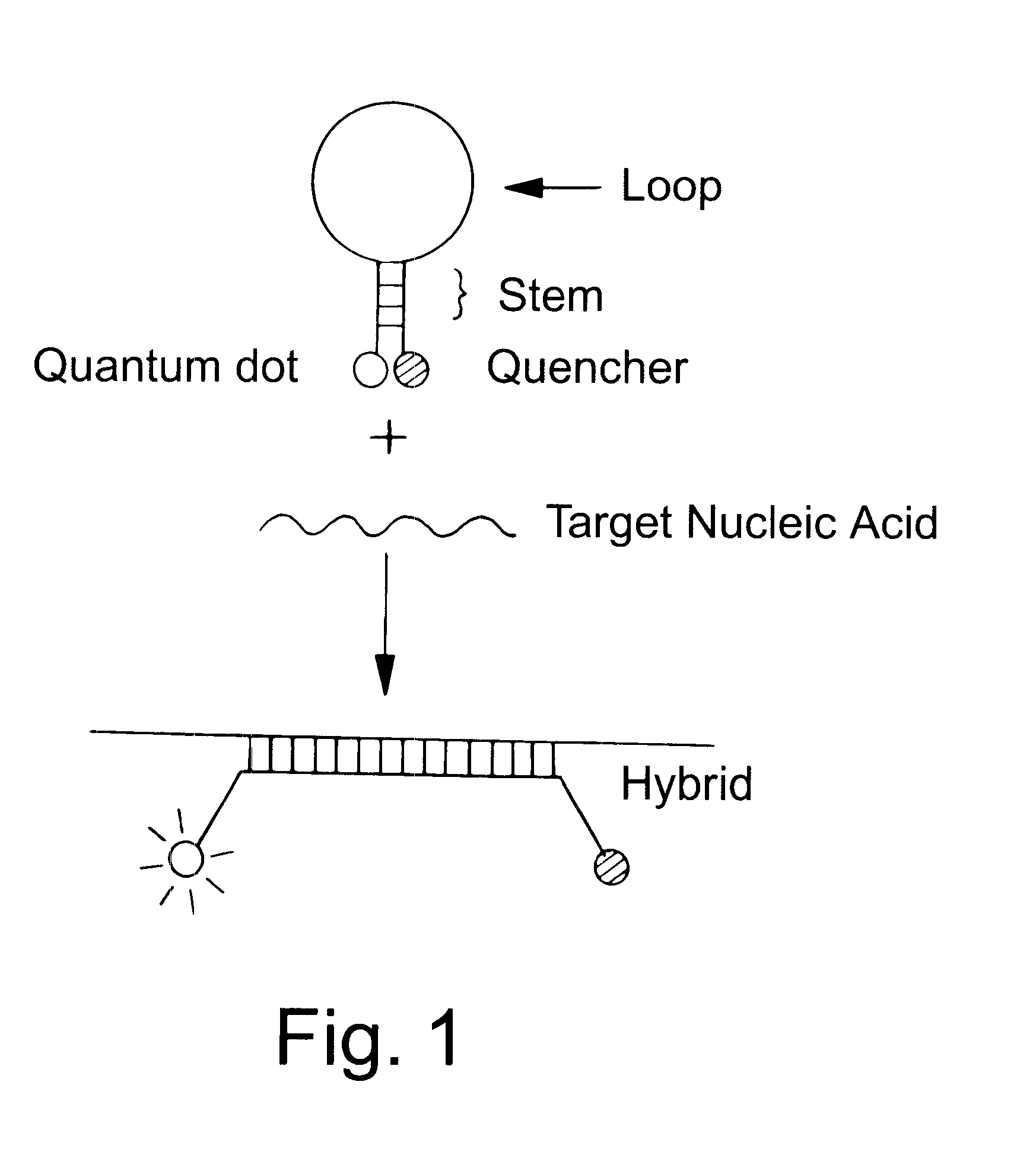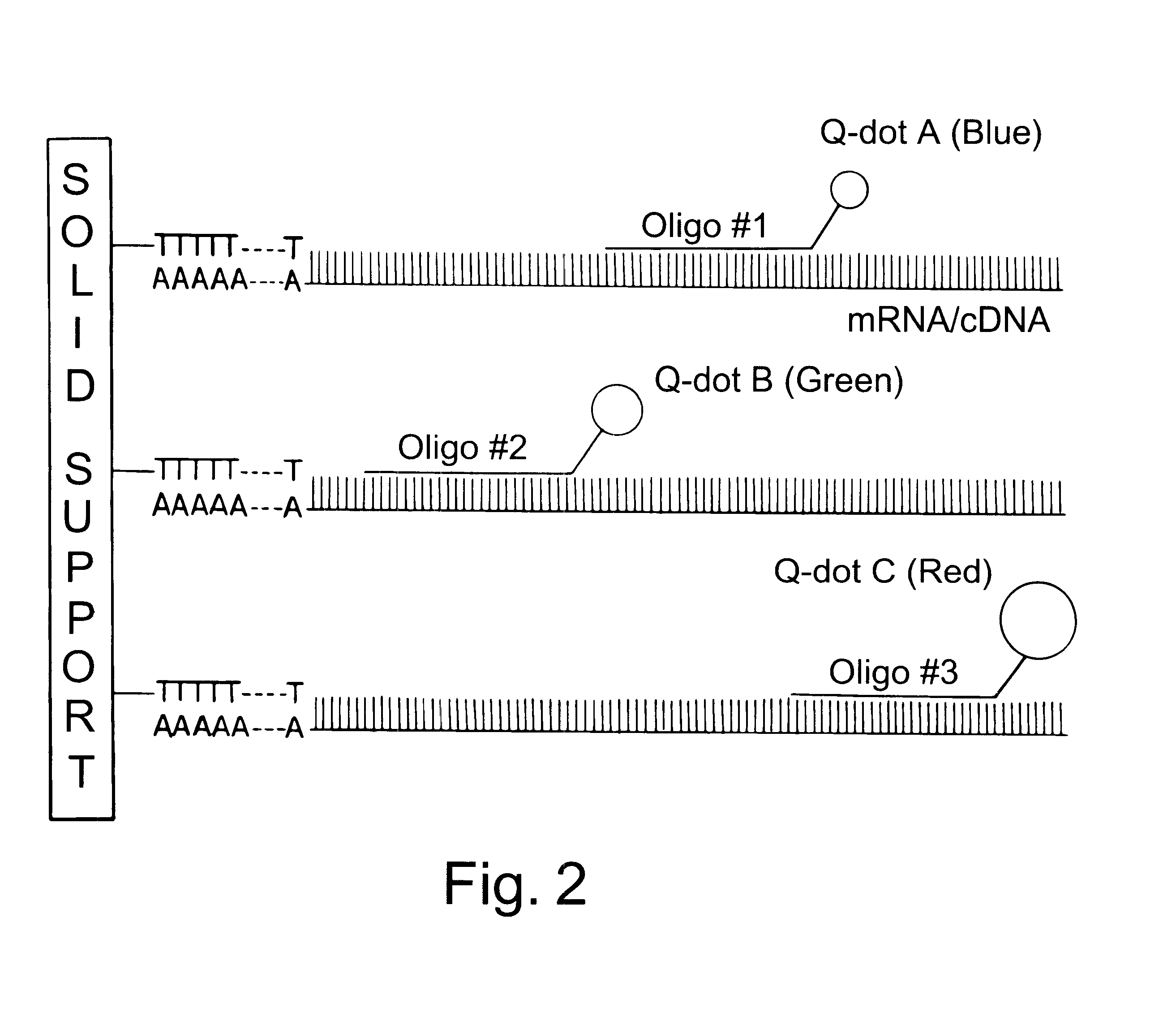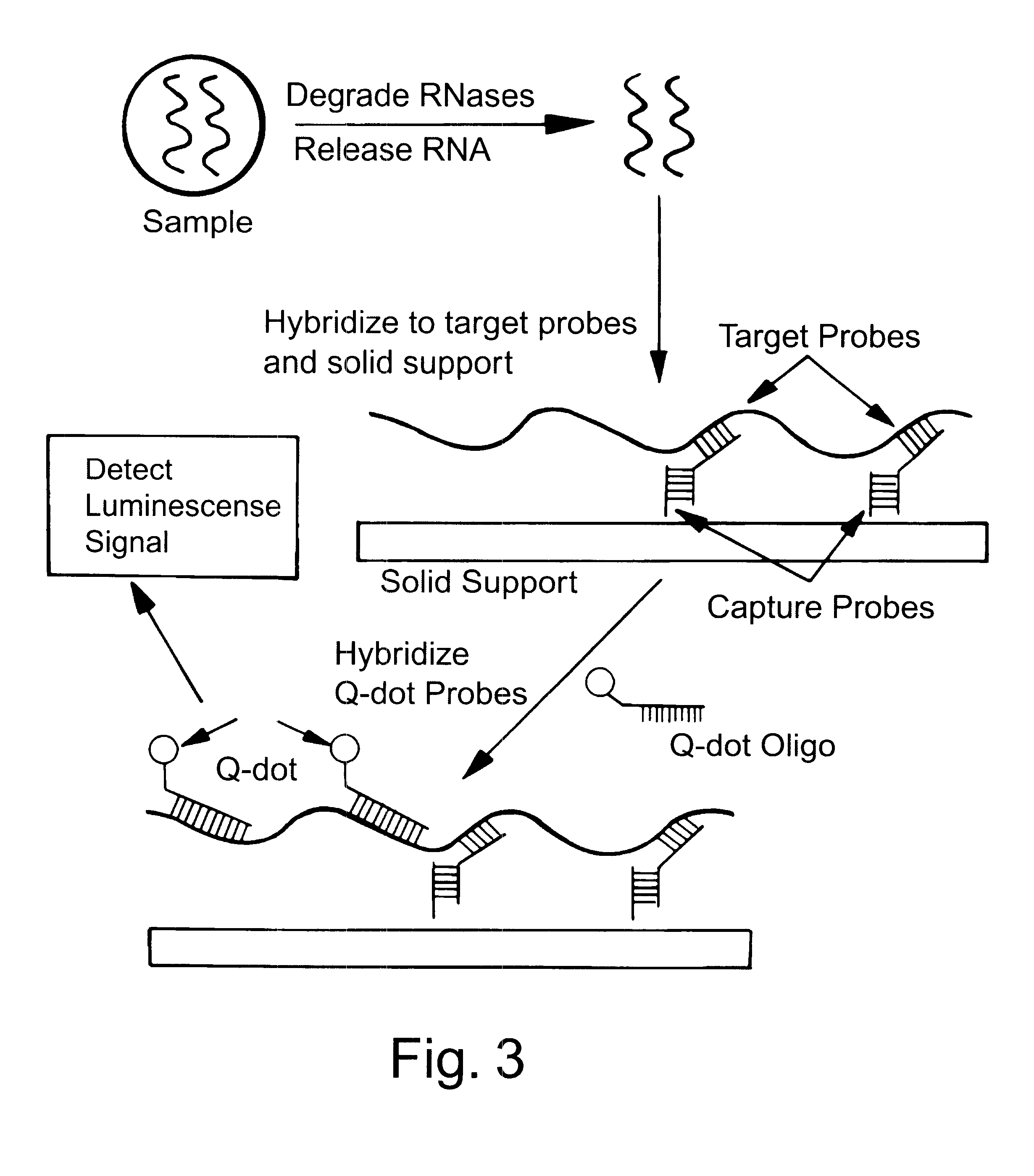Water-soluble luminescent quantum dots and biomolecular conjugates thereof and related compositions and method of use
a biomolecular conjugate and luminescent quantum technology, applied in the field of water-soluble luminescent quantum dots and biomolecular conjugates thereof, can solve the problems of not being able to attach a quantum dot to a biomolecule in such a manner, not being as sensitive or stable as non-isotopic detection systems that utilize luminescent semiconductor quantums
- Summary
- Abstract
- Description
- Claims
- Application Information
AI Technical Summary
Problems solved by technology
Method used
Image
Examples
example 1
This example demonstrates how to obtain a water-soluble luminescent quantum dot by attaching an attachment group, one end of which can bind to the cap of a luminescent quantum dot and the other end of which comprises a hydrophilic moiety.
Quantum dots comprising a CdSe core of 4.2 nm and a ZnS cap were prepared in accordance with the procedure developed by Hines and Guyot-Sionnest (J. Phys. Chem., 100, 468-71 (1996)). The quantum dots were dissolved in chloroform and reacted with 1.0 M glacial mercapto-acetic acid for 2 hrs at room temperature with slow stirring. Subsequently,. an equal volume of aqueous PBS, pH 7.4, was added to the reaction mixture with vigorous shaking for 30 mins. Upon spontaneous separation of the chloroform and aqueous layers, the aqueous layer containing the mercapto-coated quantum dots was extracted. The aqueous layer was then centrifuged to pellet the mercapto-coated quantum dots and extracted at least four times to remove excess mercapto-acetic acid. The fi...
example 2
This example demonstrates how to attach a proteinaceous biomolecule, such as a ligand, to an attachment group on the cap of a luminescent quantum dot by means of a crosslinking agent.
A 1 ml solution of the purified mercapto-quantum dots of Example 1 was reacted with 2 mg of transferring (Sigma Chemical Co., St. Louis, Mo.) and 1 mg of the crosslinking reagent EDAC (Sigma Chemical Co.) overnight at room temperature while vortexing. The solution was then centrifuged at 50,000 RPM for 1 hr to pellet the quantum dot-transferring bioconjugate and the supernatant was removed. This centrifugation step was repeated twice more. The purified transferring bioconjugates were dissolved in PBS (pH 7.4) and stored at room temperature.
example 3
This example demonstrates how to attach a proteinaceous biomolecule, such as an antibody, to the attachment group on the cap of a luminescent quantum dot by means of a crosslinking agent.
A 1 ml solution of the purified mercapto-quantum dots of Example 1 was reacted with 2 mg of Immunoglobulin G (IgG) (Sigma Chemical Co.) and 1 mg of EDAC overnight at room temperature while vortexing. The solution was then centrifuged at 50,000 RPM for 1 hr to pellet the quantum dot-immunoglobulin bioconjugate and the supernatant was removed. This centrifugation step was repeated twice more. The purified immunoglobulin bioconjugates were dissolved in PBS (pH 7.4) and stored at room temperature.
PUM
| Property | Measurement | Unit |
|---|---|---|
| size | aaaaa | aaaaa |
| size | aaaaa | aaaaa |
| size | aaaaa | aaaaa |
Abstract
Description
Claims
Application Information
 Login to View More
Login to View More - R&D
- Intellectual Property
- Life Sciences
- Materials
- Tech Scout
- Unparalleled Data Quality
- Higher Quality Content
- 60% Fewer Hallucinations
Browse by: Latest US Patents, China's latest patents, Technical Efficacy Thesaurus, Application Domain, Technology Topic, Popular Technical Reports.
© 2025 PatSnap. All rights reserved.Legal|Privacy policy|Modern Slavery Act Transparency Statement|Sitemap|About US| Contact US: help@patsnap.com



